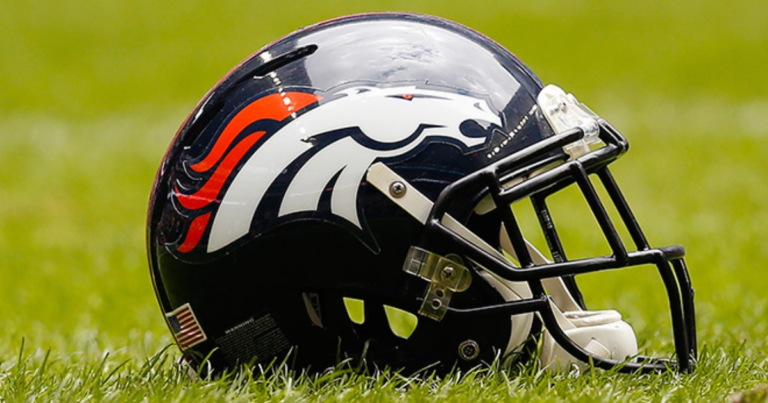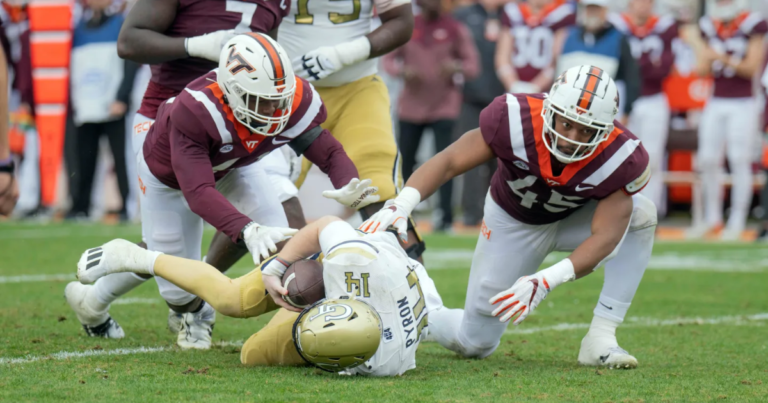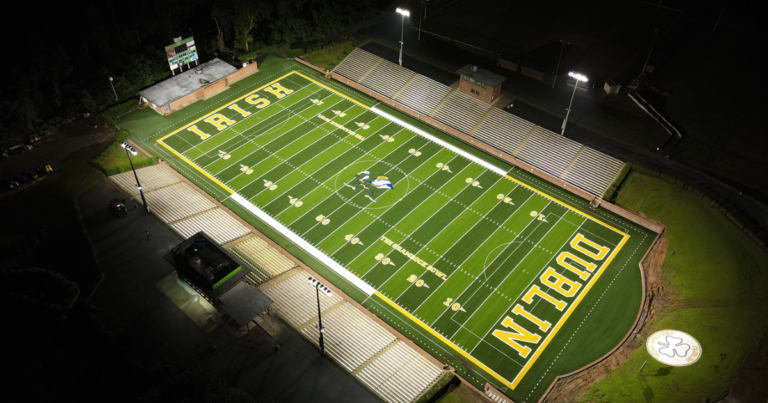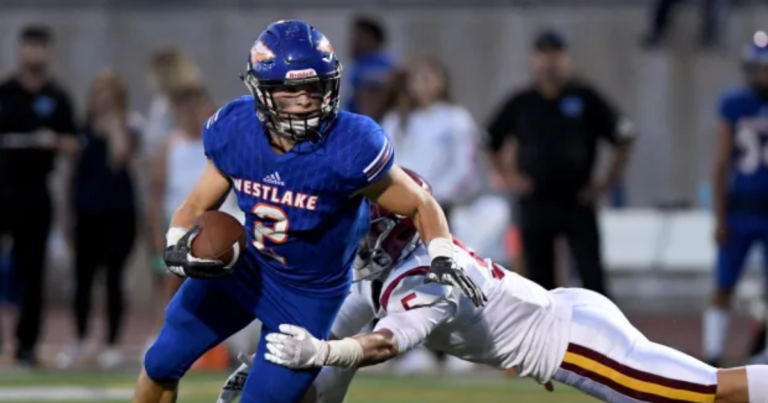How Many Positions Are in Football? A Complete Guide
Millions of people around the world are captivated by the exciting sport of football. Knowing the roles in football adds excitement to the game, whether you’re playing with friends or watching a professional game. Understanding the duties played by each player on the field enables you to better understand the strategy and teamwork required. In this guide, we’ll explore how many positions are in football, what each position does, and why they matter. Let’s break it down in a simple, engaging way.
What Are Football Positions?
A football squad comprises 11 players on the field simultaneously. Every participant is given a position that specifies their function throughout the game. These roles fall into three general categories: special teams, defense, and attack. In football, a team’s structure determines how many positions they need, however all teams use a few standard roles. According to data from reliable sources like the NFL’s official website and coaching manuals, there are 11 core positions, with variations depending on the team’s strategy.
Offensive Positions in Football
The offense is responsible for moving the ball down the field to score points. There are six main offensive positions in football, each with a unique role.
Quarterback (QB)
The offense is led by the quarterback. They throw passes, call plays, and even run with the ball. A quarterback needs to be able to think quickly, lead, and have a good arm. They are among the most important positions in football since they touch the ball on practically every play.
Running Back (RB)
Running backs carry the ball during running plays and catch short passes. They need speed, agility, and power to dodge defenders. There are two types of running backs: halfbacks, who focus on speed, and fullbacks, who block for the halfback or carry the ball in short-yardage situations.
Wide Receiver (WR)
In order to catch the quarterback’s throws, wide receivers must run accurate routes, possess quick reflexes, and have strong coordination. They frequently make highlight-reel receptions, which adds excitement to the game.
Tight End (TE)
Tight ends are multipurpose athletes that receive passes and block for running plays. They mix a wide receiver’s ability to catch with the power of an offensive lineman. In both rushing and passing plays, tight ends are essential.
Offensive Linemen (OL)
In addition to providing running backs with lanes, offensive lineman shield the quarterback. Two guards, two tackles, and center are the five lineman positions. While guards and tackles block defenders, the center snaps the ball to initiate a play. These guys, who control the line of scrimmage by power and collaboration, are the offense’s unsung heroes.
Summary of Offensive Positions
- QB, RB, WR, TE, and 5 OL are the 6 primary positions in total.
- Key Roles: Run the ball or pass it to get points.
- Skills Needed: Strength, speed, coordination, and strategy are necessary.
Defensive Positions in Football
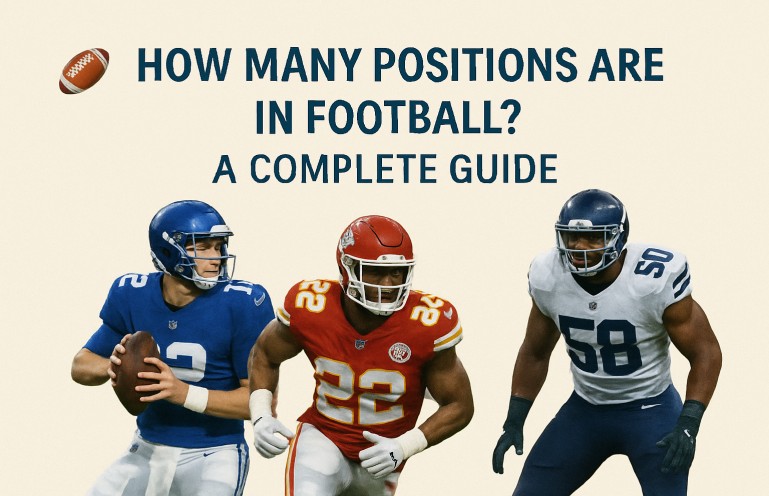
The defense stops the opposing team from scoring. There are typically five main defensive positions, grouped into three categories: defensive line, linebackers, and defensive backs.
Defensive Linemen (DL)
Defensive linemen, including defensive tackles and defensive ends, rush the quarterback and stop running plays. They line up opposite the offensive linemen and use power and quickness to disrupt plays. Defensive tackles focus on the middle, while defensive ends play on the edges.
Linebackers (LB)
Linebackers are the heart of the defense. They tackle runners, cover receivers, and sometimes rush the quarterback. Depending on the formation, there are middle linebackers and outside linebackers. They need strength, speed, and instincts to react to plays.
Defensive Backs (DB)
Defensive backs, including cornerbacks and safeties, cover wide receivers and prevent big passing plays. Cornerbacks guard specific receivers, while safeties patrol the backfield to stop deep passes or runs. These players are fast and agile, often making game-changing interceptions.
Summary of Defensive Positions
- Total: 5 main positions (DL, LB, DB, with subtypes like DT, DE, CB, and S).
- Key Roles: Stop the offense from advancing or scoring.
- Skills Needed: Speed, tackling, and coverage abilities.
Special Teams Positions in Football
Special teams handle kicking plays, such as kickoffs, punts, and field goals. These positions are often filled by players from the offense or defense, but some are specialists.
Kicker (K)
The kicker handles field goals, extra points, and kickoffs. Precision and leg strength are crucial for this role. A good kicker can change the game with a long field goal.
Punter (P)
The punter kicks the ball to the opposing team when the offense can’t advance. They aim to pin the opponent deep in their territory. Punters need accuracy and distance in their kicks.
Long Snapper (LS)
The long snapper snaps the ball during punts and field goals. This role requires precision to deliver a clean snap to the punter or kicker.
Return Specialists
Return specialists catch kickoffs and punts, aiming to gain as many yards as possible. They need speed and elusiveness to dodge tacklers.
Summary of Special Teams Positions
- Total: 4 main positions (K, P, LS, and return specialists).
- Key Roles: Handle kicking and return plays.
- Skills Needed: Precision, speed, and agility.
How Many Positions Are There in Total?
In a standard football game, there are 11 players per team on the field, each with a specific position. Combining offense, defense, and special teams, there are about 15 distinct position names in football, though some players may fill multiple roles. For example, a wide receiver might also be a return specialist. The exact number of positions can vary slightly based on the team’s formation, such as a 4-3 defense (4 defensive linemen, 3 linebackers) or a 3-4 defense (3 linemen, 4 linebackers).
Here’s a quick breakdown:
- Offense: 6 positions (QB, RB, WR, TE, and 5 OL).
- Defense: 5 positions (DL, LB, DB, with subtypes).
- Special Teams: 4 positions (K, P, LS, return specialists).
- Total Unique Positions: Approximately 15, depending on the formation.
Why Understanding Football Positions Matters
Knowing football positions enhances your enjoyment of the game. When you understand what a linebacker does or why the quarterback is so important, you see the strategy behind every play. It’s like solving a puzzle—each position fits together to create a winning team. For new fans, learning positions makes watching games more engaging. For players, understanding roles helps improve teamwork and performance.
Benefits of Knowing Football Positions
- For Fans: Appreciate the game’s tactics and cheer for key moments.
- For Players: Know your role and how to support teammates.
- For Coaches: Build strategies that maximize each position’s strengths.
How Teams Use Formations to Assign Positions
Teams use formations to organize players on the field. A formation is like a blueprint that shows where each position lines up. For example, an offensive formation might have 1 QB, 2 RBs, 2 WRs, 1 TE, and 5 OL. A defensive formation like the 4-3 has 4 linemen, 3 linebackers, and 4 defensive backs. Coaches choose formations based on their game plan, which can slightly change the number of players in each position.
Common Formations
- Offense: “I-Formation” (2 RBs, 2 WRs, 1 TE) or “Spread” (4 WRs, 1 RB).
- Defense: “4-3” (4 DL, 3 LB, 4 DB) or “3-4” (3 DL, 4 LB, 4 DB).
- Special Teams: Varies, but includes kickers, punters, and returners.
Tips for Learning Football Positions
If you’re new to football or want to deepen your knowledge, here are some simple steps to learn the positions:
- Watch Games with a Purpose: Focus on one position at a time, like the quarterback, and notice their actions.
- Use Visual Guides: Look at formation diagrams online to see where players line up.
- Play Video Games: Games like Madden NFL teach positions through gameplay.
- Talk to Fans or Coaches: Ask questions to clarify roles and strategies.
- Practice on the Field: If you play, try different positions to understand their challenges.
Fun Facts About Football Positions
- Because they are the team’s leader, the quarterback is frequently referred to as the “field general.”
- Offensive linemen rarely get the spotlight but are crucial for every play.
- Some players, like Deion Sanders, excelled at multiple positions (cornerback and wide receiver).
- Field goals and extra points allow kickers to score more points than any other player during a season.
Conclusion
Football has about 15 distinct positions, split across offense, defense, and special teams. Each position, from the quarterback to the long snapper, plays a vital role in the game’s excitement and strategy. By understanding these positions, you can enjoy football on a deeper level, whether you’re a fan, player, or coach. Next time you watch a game, pay attention to each position’s role it’ll make every play more thrilling. Keep exploring, and soon you’ll know football like a pro!




